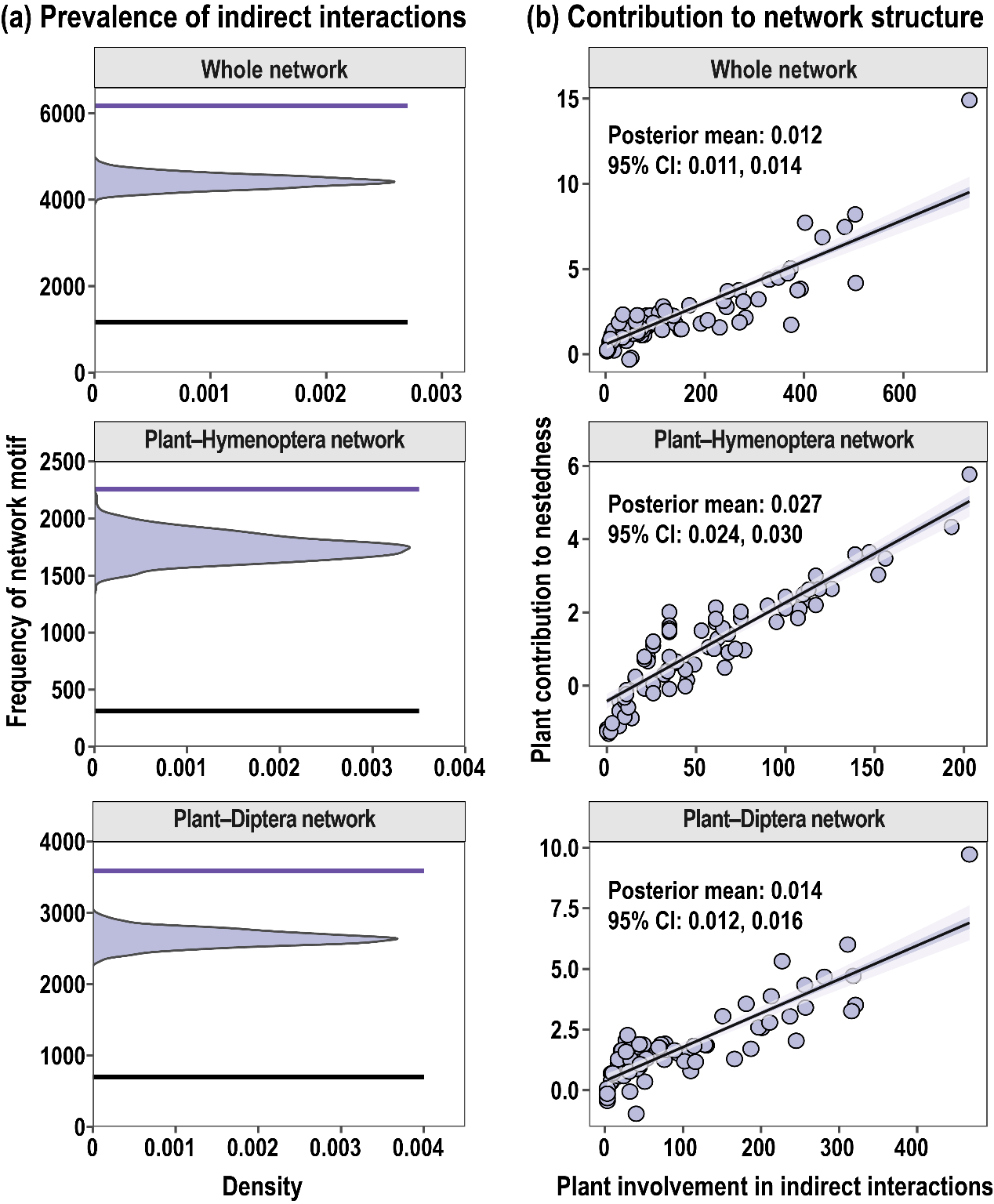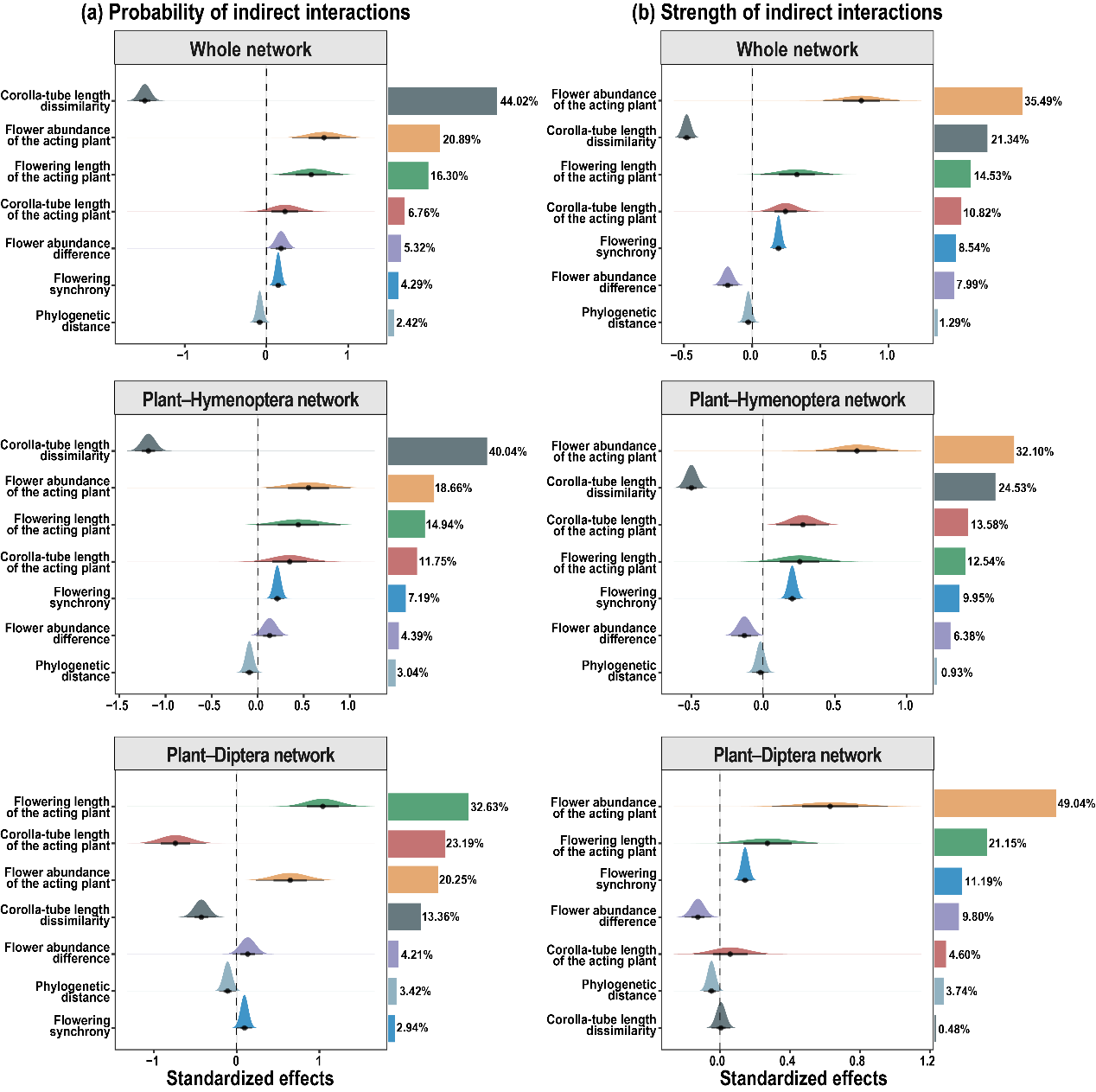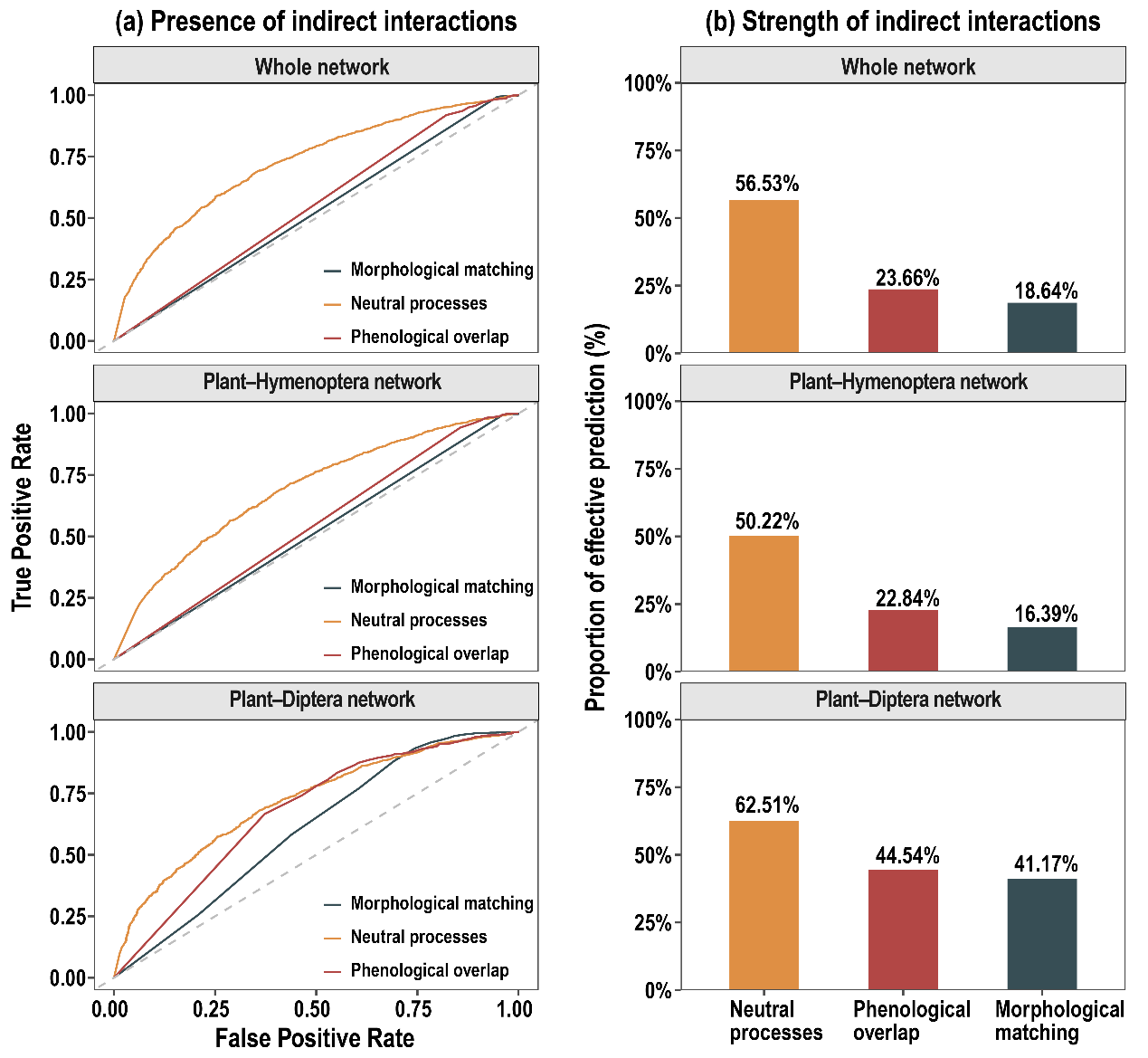Name:YANG Chunfeng
Tell:
Email:cfyang@wbgcas.cn
Organization:Wuhan Botanical Garden
Hidden Network of Plants Indirect Interactions Sustains Biodiversity in Vibrant Alpine Meadows
2025-10-22
The Hengduan Mountains are recognized as one of the world's biodiversity hotspots. In the alpine meadows of this region, more than 100 plant species often flower simultaneously within a relatively short season and are visited by hundreds of insect pollinators. Amid this stunning diversity, a key question arises: how do so many plants share pollinators and coexist stably?
Researchers from the Plant Reproductive Ecology Group at Wuhan Botanical Garden, Chinese Academy of Sciences, studied over 120 insect-pollinated plant species in a meadow located near Shangri-La city. The team recorded nearly 7,000 flower visits, measured traits of 93 plant and 258 pollinator species, and constructed pollination networks for bees, flies, and the entire community.
The study found that pollinator-mediated plant-plant indirect interactions were pervasive, occurring six times more often than direct plant-pollinator interactions. These hidden links enhanced network nestedness, a structural pattern that allows specialist plants reliant on few pollinators to coexist with generalist plants that attract many visitors, effectively reducing competition and maintaining high biodiversity.
Flower traits strongly influenced which species share pollinators. In bee and overall networks, corolla-tube length determined whether two plants shared pollinators, while in fly networks, flowering duration was the most important factor. Once plants were connected through shared pollinators, flower abundance became the main factor determining the strength of indirect interactions across all networks, with abundant species acting as “network hubs” that drove visitation to neighboring plants.
When considering both plant and pollinator traits, neutral processes (interactions occurring in proportion to species abundance) predicted indirect interactions better than niche-based processes. In other words, abundance generally outweighed trait-matching in structuring indirect interactions in this alpine meadow.
These findings highlight the importance of abundance, flowering phenology, and morphological traits in structuring pollinator-mediated plant-plant indirect interactions and thus, shed light in understanding the mechanisms in biodiversity maintenance of both plants and pollinators, which play as “invisible scaffolding” sustaining biodiversity in species-rich plant communities.
The study, entitled“Disentangling the mechanisms behind indirect interactions between plants via shared pollinators: effects of neutral and niche-based processes”, was published in Journal of Ecology. HE Yongdeng is the first author, with Assoc. Prof. YE Zhongming and Prof. YANG Chunfeng as co-corresponding authors. It was supported by the National Natural Science Foundation of China. (Online: 2025-10-15)

The prevalence of pollinator-mediated plant-plant indirect interactions in pollination networks and their contribution to network structure (Image by WBG)

Effects of flower traits on pollinator-mediated plant-plant indirect interactions (Image by WBG)

Predictive ability of neutral and niche-based processes on pollinator-mediated plant-plant indirect interactions (Image by WBG)